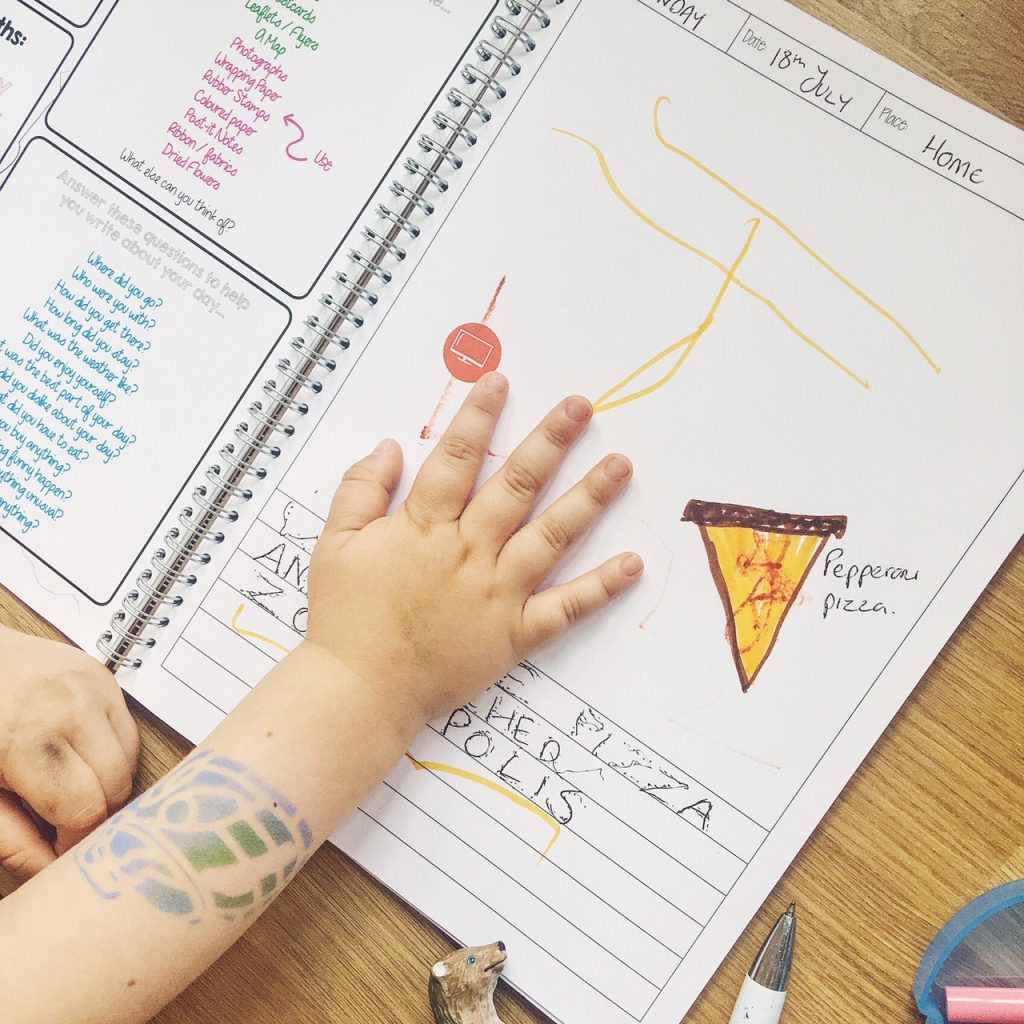Writing is an essential skill for young children to master. It allows them to share their thoughts, stimulates their creativity and helps them with communication. Writing helps children think, as putting things on paper forces them to contemplate their ideas and begin structuring them logically. In addition, writing skills are useful at school and valuable in future careers as well due to the fact that formal written communication is a basic requirement in most professions.
However, the way many teachers deliver writing lessons can be dull and bureaucratic, resulting in kids having a negative attitude towards writing. Some schools have strict spelling rules that children are obliged to follow, without much consideration of whether or not they support their writing style.
In this post, we’ll examine some ways to incorporate writing and make it interesting for children of all ages, even those that fight you every step of the way. But more adult students can order Ukwritings essay services for British students to get additional writing assistance. At Ukwritings you can find professional writers who can give insights and all of the help you need to find your own unique voice.
Make Writing a Fun Activity
If kids don’t find writing fun they are not likely to partake in it. If writing is turned into a play for children to do, they would participate.
Here are some ways to make writing fun:
- Use colorful stationery
- Incorporate drawing into writing tasks
- Create writing games
- Allow kids to choose their topics
- Use technology like tablets or computers
- Set up a cozy writing corner
- Reward progress with small prizes
Let’s dive into some of those concepts. Use colourful stationery – the more visually stimulating the process of writing, the better. Buy colourful pens and pencils, as well as bright notebooks, which children will enjoy if they like writing. Finding ways to combine drawing and writing could be helpful for children who have a preference for visual means of communication: perhaps have them draw a scene from their story before describing it on paper?
To ramp up the fun factor, try a writing game that involves a word chain, with each player writing a sentence that continues the story that the previous one created. Kids learn about how a narrative builds and delivers, and about the thrill of a joint piece of work.
Leaving it up to your kids to decide what they want to write about gives them ownership over the proceedings, and sometimes freedom brings the heat, so to speak. Plus it pays to set up a reading corner away from the noise of the busier parts of the house. Get a comfy armchair, some good bedside lamps, and tell them that’s their special writing corner. And, since kids might see writing as schoolwork and become jaded by association, coursework writing service can provide structured support to students as they complete their degrees so they keep writing with an extra dose of excellence.
If writing were to become a fun and exciting endeavour for children, it would lead to them embracing it with eagerness and feel a lifelong affinity for the sheer joy of articulating their thoughts through the written word.
Tell Stories Through Pictures
Since visual stimuli often engaged it better, she could try to incorporate pictures into writing exercises to bridge the gap between children’s visual thinking and their views of writing as a daunting task.
Present a kid with a sequence of images conveying a story, and ask them to write what’s happening in each. It helps children develop narrative capabilities, yet offers an open-ended visual frame of reference.
You can expand on this activity by:
1. Using family photos to inspire personal narratives
2. Cutting out magazine pictures to create a collage story
3. Using wordless picture books as prompts for storytelling
For younger children, begin with simple descriptions of what they see in each picture. As they get more confident, ask them to tell you what they think might have happened before or after the scene depicted in the image.
This is a concrete way to share a story with kids who are at a loss for ideas for their own writing – they are still left imagining, but the imagining can lift off from a grounded point.
Create Writing Prompts That Spark Imagination
Good prompts can open up the creative floodgates, and make writing more interesting. Try to choose topics that engage whatever your child is into now or has just been through. Prompts that relate to his world will have a higher chance of getting him to write.
Age-Appropriate Prompts
With very young children: What would you do if you could fly?Boost imagination and encourage encounter narratives.With older kids: Imagine you are the first person to land on Mars. Tell me what you see.Boost creativity and encourage knowledge-centred narratives.
Use Objects as Inspiration
Take anything, and simply write a story about it. (I put a variety of objects in a bag, have a child dig in to pick one out; that becomes the key item in his story.) … It teaches creative thinking to find something new even in the most basic, ordinary objects.
To make this activity even more engaging, you could:
- Create a “story jar” filled with different objects
- Use seasonal items to inspire holiday-themed stories
- Incorporate favorite toys or characters into the writing prompts
Prompts should be open-ended to allow for maximum potential creativity: Think of the child’s imagination as a lush landscape around a tiny pond. You cannot make the pond bigger – it is small and hard to fill. But you can just throw them in, and they’ll jump right in and start splashing around! Your task is simply to scatter some shots in the air to get them to swim.
Make Writing Practical and Purposeful
Kids will write when they see writing making a difference in the world. Adults can inculcate interesting and relevant purposes to reading and writing when they demonstrate to children how we rely on reading and writing in our lives.
Compare different types of writing to show their purposes:
| Type of Writing | Purpose | Example | Real-World Connection |
| Letters | Communication | Writing to a pen pal | Staying in touch with distant friends |
| Lists | Organization | Creating a shopping list | Helping with family errands |
| Stories | Entertainment | Writing a short story for a younger sibling | Creating content for others to enjoy |
| Journals | Self-expression | Keeping a daily diary | Processing emotions and experiences |
| Instructions | Guidance | Writing rules for a made-up game | Explaining how to do something |
Try encouraging children to do a bit of all of these kinds of writing – they might write a letter to a family member, a to-do list for the day, or some step-by-step instructions for how to play their favourite game. Now children can see the practical applications of writing and how it is an important part of everyday life.
Educators can also involve children in writing that they do within their family unit – as in having them write the grocery list, or signing a holiday card. To be sure, much research remains to be conducted. Evaluating whether every child should be given access to the full range of writing tools developed for adults, for example, requires weighing the benefits of broad writing with the costs of specific kinds of experience. But all things considered, it seems reasonable to grant children as much writing freedom as possible.
Once they become aware of the many purposes that formal writing serves in the world, children might have reason to practise writing and know where and why they’re doing it.
Encourage Reading to Improve Writing
Reading leads to writing, and the more kids read, the more they are exposed to the nuances of language, vocabulary and the ways in which they are used. The more writing they see, the better writers they will become.
Here are some ways to encourage reading:
- Read diverse genres
- Discuss books together
- Visit libraries regularly
- Create a reading nook at home
- Set reading goals
Children who read fiction, non-fiction, biographies and how-to books will be exposed to a variety of writing styles and formats. This variety can spark creativity in their own writing. Talking about books helps foster critical-thinking skills while sparking ideas for stories they might want to create.
Frequent library visits can help make reading a special activity. Encouraging kids to select their own books will foster independence and help them develop a sense of ownership over their reading habits. Creating a comfy reading space at home can help make reading time special and encourage kids to read more often.
The more you know, the more you grow. The more you read, the more things you’ll know. The more that you learn, the more places you’ll go.
It emphasises the magical link between reading and learning, which can spark eagerness to read. It is the sort of quote that is good to share with children to encourage them to read more and, of course, to write better.
But remember, reading should be a pleasure, not a chore. A child who enjoys reading will sooner or later become a confident author, full of invention and ideas.
Use Technology to Make Writing Engaging
It is technology that can turn kids on to writing today, because many already feel at home with digital devices – addressing that comfort level can make writing more attractive.
Practical Example: Start a class blog where kids can post their writings. They have a real audience and a purpose for their work – they could write about what is going on at school, book reviews or personal experiences. After reading others’ posts, kids might want to put more effort into their own work because they know that others can read it.
Here are some other ways to use technology for writing:
1. Use typing games to improve keyboard skills
2. Try digital storytelling apps that combine text with images and sound
3. Encourage collaborative writing through shared online documents
4. Use text-to-speech software to help kids hear their writing read aloud
While using technology is not bad, it should be limited in use and Balance is the best solution. While digital technology helps the learner to gain more interest in writing, using a pen and paper in writing through schemes and direct writing are some aspects of writing in the past, both of them can be used together to help the learner write in the modern era.
Collaborate on Writing Projects
Writing need not be such a lonely pursuit. Collaborative projects can make writing fun and less intimidating to children because when you work with others, new ideas come to mind, and you learn from those around you.
Group Storytelling
Pitch a story and ask each child to add a sentence or a paragraph. It’s an unpredictable, playful story as the group can take the tale by turns, making something exciting and spontaneous together. The acting out might unearth unexpected gaps in the children’s understanding of what makes a story work, from basic chronology to plot, character and coherence. Children can learn the importance of turning someone else’s idea into meaningful stuff.
You could make this activity even more engaging by:
- Using a special “story ball” that gets passed to the next storyteller
- Setting the story in a fantastic world created by the group
- Adding illustrations to go along with the story
Pen Pals
Send Them on a Pen Pal Program – If you’re on a whole-class program, find another teacher who’s on a similar program and create a pen pal program between the two classes. Students can practise writing letters and making new friends! It’s giving them a real reason and a real audience for their writing, which can be very motivating.
Pen pal writing can teach kids about:
- Letter formatting
- Asking and answering questions
- Sharing information about themselves and their lives
- Understanding different perspectives and cultures
In contrast to a composition written with all the trappings of individuality, in a group writing project students experience that writing can be social and interactive – rather than gratuitously solitary. This can work especially well for children who see writing as trying to get from point A to point B.
Conclusion
Making writing sound like an arduous task doesn’t have to be the only way to attract kids to it. When we make writing fun, relevant, and purposeful, we allow children the opportunity to develop a lifelong love of a very vital everyday skill. Let’s consider some strategies to help us make writing fun for children again. Visual Prompts:Visual prompts – a picture to write about – can be a starting point. They can be effective for writing fiction and nonfiction. Some good examples can be found on websites and blogs such as 5 Minute Mojo, No Word County, or Wrimo.Using Technology: Technology is often fun for children so it is a good idea to include devices whenever appropriate. One way to do this is by utilising live options such as Google+.Children often read to find information they want or need. They also read for pleasure. Either way, encouraging both can have a positive effect on students’ writing.Collaborative Projects: One effective way to encourage kids to write is through collaborative projects. This method will keep them engaged and interested.
Patience, then, is key – be sure to celebrate the small steps along the way. Every child will learn to write in his or her own time. As long as you create an atmosphere for expression, children will be free to be imaginative and creative with their writing.
And with the right approach, they can discover the fun of putting pen to paper. As they become more accomplished and appreciative writers, they’ll enter high school and college more prepared to meet their academic responsibilities, and a skill they can take with them the rest of their lives.




